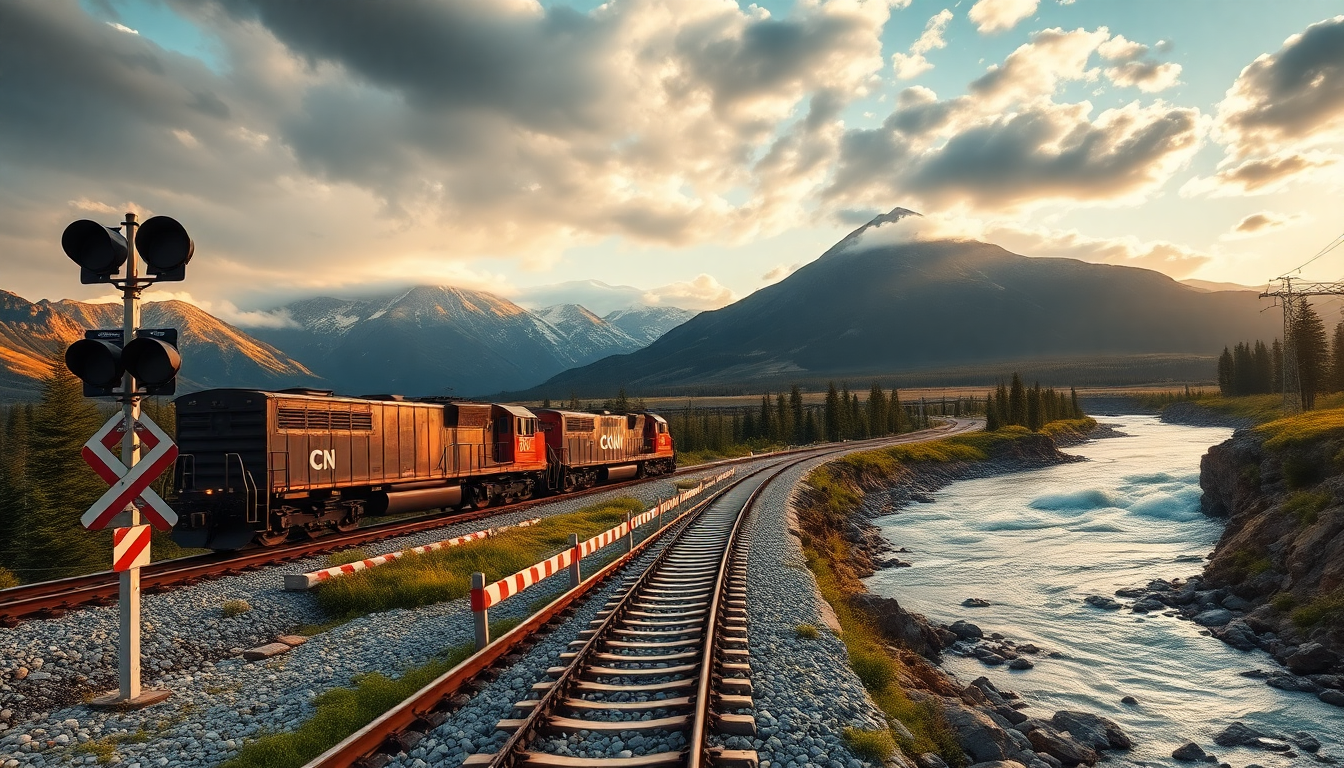Table of Contents
Imagine living on the edge, where a river could decide to wreak havoc on your existence. That’s the reality for CN Rail, which is currently embroiled in a legal battle with Parks Canada over the looming threat of flooding in Jasper National Park.
The railway operator is waving a big red flag, warning that this isn’t just a minor inconvenience; we’re talking full-blown catastrophic impacts that could derail not only trains but the entire Canadian economy. Who thought bureaucratic delays could become this dramatic?
The ticking time bomb of flooding
CN Rail has decided enough is enough, and they’ve taken their grievances to Federal Court. They argue that Parks Canada has been dragging their feet for nearly eight years, refusing to greenlight proposals that could mitigate the risk of flooding.
You have to wonder, what’s the hold-up? Are they too busy playing environmental chess while the river threatens to turn into a raging beast? According to CN, the Snake Indian River is on the brink of a catastrophic avulsion—a fancy term for when a river decides to ditch its old path and carve a new one, potentially right through CN’s main line.
Sounds like a scene straight out of a disaster movie, doesn’t it?
The stakes are real
Let’s break this down: if the river decides to go rogue, CN Rail could face “significant destruction” of its infrastructure. Imagine trains derailing like a clown car gone wrong, all because some bureaucrats couldn’t make a decision in time.
The railway operator insists this main line is critical infrastructure, vital for keeping the Canadian economy chugging along. So, if you think about it, the stakes couldn’t be higher—unless you’re one of those who enjoys watching the world burn, of course.
Bureaucratic nonsense
In their application filed last month, CN detailed how past flooding in 2016 forced them to scramble under dangerous conditions to protect their rail lines. Ice jams, emergency responses—it’s like a scene from a high-stakes thriller. But apparently, none of this has swayed Parks Canada, which CN claims continues to throw up roadblocks. It’s almost as if they’re playing a game of bureaucratic whack-a-mole, with CN’s proposals being the moles that never seem to get a chance to pop up.
Proposals and rejections
CN has been trying to present solutions since 2017, but each time they think they’ve found a way forward, Parks Canada issues new guidelines that seemingly put them back to square one. It’s like trying to hit a moving target while blindfolded. They’ve suggested using gravel from the river itself to build a flood containment berm, which—surprise, surprise—was met with opposition. It’s almost as if they’re saying, “We love the idea of flood protection, but only if it’s done our way, which, by the way, is going to take forever.”
The absurdity continues
In a wild twist, CN’s latest proposal offered two options: one that would bring in materials from outside the park and another that would use gravel from the riverbed. Yet, Parks Canada seems to think using park materials is a big no-no. They’ve rejected the idea outright, citing the regulatory and policy intent for a declared wilderness area. One can’t help but roll their eyes—aren’t we all just trying to prevent a disaster here? Can’t we drop the red tape for a second?
The logistics nightmare
Now, let’s talk logistics. CN estimated that if they were to truck in materials, it would take two years on an optimistic schedule—think 4,000 truck trips. Picture that chaos: a parade of trucks clogging up the roads while floodwaters loom. It’s like planning a wedding in a hurricane, but the wedding is CN’s infrastructure, and the hurricane is a literal river ready to swallow it whole. Parks Canada has previously indicated some support for constructing a berm but seems to be stuck in policy purgatory, unwilling to compromise.
What’s next?
As of now, CN Rail is left wondering what’s next. Their application aims to overturn Parks Canada’s rejection of a necessary impact assessment. It’s a maddening scenario where CN feels they’ve provided more than enough information for the assessment to proceed, yet they’re left in limbo. Meanwhile, the river continues to flow, and with it, the potential for disaster looms ever closer. In the end, will anyone step up and take responsibility, or are we destined to watch this bureaucratic soap opera unfold while the clock ticks down? Stay tuned.





